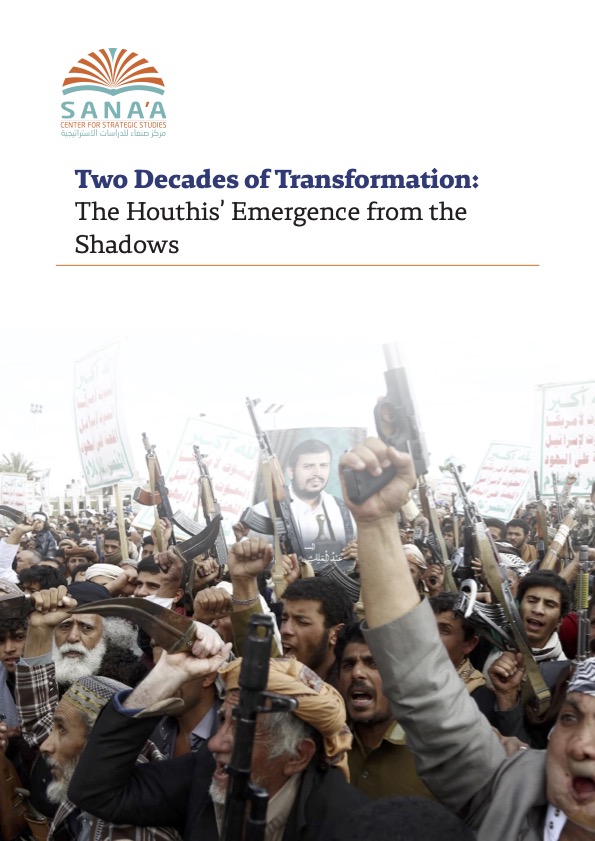When they first emerged from the “Believing Youth” movement in 2004, no one could have imagined the Houthis—a small group of local rebels fighting with traditional weapons— would evolve into a military and political force with influence extending across the regional and international landscape. But the Houthis’ development was not merely a matter of geographic expansion or enhanced military capabilities; it involved deeper transformations in its organizational structure, administrative systems, and political strategies.
The growing disruption and threat posed by the Houthis recently prompted the administration of US President Trump to announce its first foreign military operation, and airstrikes against the group expanded dramatically in mid-March 2025. March is the same month in which a Saudi-led coalition launched Operation Decisive Storm against the Houthis in 2015, making it almost precisely a decade since the conflict began. But the Saudi operation did not weaken the Houthis as expected – on the contrary, it unintentionally strengthened the group and shaped them into their current form. This raises questions about the effectiveness of the ongoing American operation, especially since it appears to rely currently on an airstrike-only strategy.
Numerous events and long-term developments have turned the Houthis from a small, local group in the mountains of Sa’ada into an international and regional threat. This is not just a linear story of the military rise of an armed group; it is a complex political, military, and ideological puzzle. There were key transformations that accompanied the Houthis’ emergence from the shadows and that enabled them to evolve into a military force that threatens and preoccupies the world. Understanding these is vital for those hoping to anticipate the group’s future trajectory.
Military and Security Transformations
Over the years, the Houthis have undergone numerous transformations, but perhaps the most significant has been the development of their military capabilities and combat strategies far beyond their modest beginnings. At the outset of their military operations, the Houthis relied on guerrilla warfare tactics and light to medium weaponry. Today, they possess an advanced military arsenal, including drones, ballistic missiles, and naval weapons. This has enabled them to shift from guerrilla tactics to hybrid methods that blend simple, traditional combat techniques with advanced capabilities and strategies, granting them a long military reach that allows them to exert influence and play a broader role in the region.
Alongside their military evolution, the Houthis have developed security capabilities and specialized field strategies, enabling them to adapt to surrounding security challenges and intelligence pressures. They have improved methods to camouflage their military assets, secure the movements of their leadership, maintain supply lines, and mitigate the damage and impact of airstrikes. These tactics appear to be continuously evolving.
Political and Administrative Transformations
The Houthis have also worked to develop a range of political and administrative strategies in the areas under their control. They have restructured state institutions centered in the capital, Sana’a, reshaping administrative and governmental frameworks to align with their political vision and ideological orientation. On the economic front, the Houthis have bolstered their revenues by developing specialized taxation and customs mechanisms. The majority of Yemen’s population resides in areas under Houthi control, and the revenue has helped solidify the group’s presence.
The Houthis have also managed to refine their political rhetoric. In their early days before seizing Sana’a, the group’s narrative was rooted in grievances such as reviving the Zaidi sect after decades of marginalization, government corruption, and fuel price hikes. Now, they present themselves to the local populace and external audiences as a resistance movement confronting foreign interventions, incorporating slogans centered on national sovereignty and opposition to external aggression into their political and media discourse. They have also leveraged regional issues, such as the Palestinian cause, to strengthen their resistance narrative and expand their base.
Ideological and Cultural Expansion
Ideologically and culturally, the Houthis have succeeded in expanding their base over the years. Initially, those ideologically aligned with the Houthis were a small group, but their cultural influence grew following their local expansion and takeover of Sana’a in September 2014. The Houthis employed various methods to broaden their reach, including religious discourse in mosques, the deployment of “cultural supervisors” to educational institutions, public facilities, and diverse local communities, and by integrating their ideas into school curricula and promoting religious events and newly established celebrations in their territories.
These tactics have expanded the Houthis’ cultural sphere and spread the concepts and ideas they embrace through Yemeni society. They have promoted their ideology using religious and nationalistic slogans, capitalizing on societal solidarity driven by this discourse. They have also exploited the widespread rejection of Western regional policies to their advantage.
Another crucial aspect of the Houthis’ ongoing transformations is their accumulation of expertise in negotiation and political maneuvering, which has enabled them to manage sensitive issues with international and regional parties, foremost among them the United Nations. This expertise has been reflected in their ability to navigate complex political agreements, such as the Stockholm Agreement, through which they maintained effective control over Hudaydah and its ports. The group has also demonstrated a degree of flexibility on other issues, such as prisoner exchanges, the siege of Taiz, and road reopenings, that have been central to UN-led international mediation efforts. Undoubtedly, the Houthis did not possess such negotiating prowess at first, and it is likely they have partially benefited from the experience of their ally Iran, which has extensive expertise in managing relations with the international community and negotiating on multiple tracks.
A Persistent Dilemma
Despite the dynamic transformations and developments the Houthis have undergone over the years, and their notable progress in various military, political, administrative, and diplomatic domains, the challenges they face to their rule remain persistent and real. While they have succeeded in transitioning from a local opposition movement to an influential regional actor, even this expansion does not guarantee their longevity should they persist with their current approach.
One of the most prominent challenges confronting the Houthis is their growing international isolation, particularly with the escalation of Western sanctions and increasing skepticism about a negotiated l settlement to the Houthi threat. This isolation restricts their room to maneuver on the political stage and puts them in constant confrontation with regional and international powers. Additionally, the deteriorating economic and humanitarian conditions in the areas they control affect the daily lives of residents and erode popular support. While revolutionary slogans may rally crowds, the harsh realities of life pose an ongoing challenge for the Houthis—slogans, after all, do not buy bread.
The Houthis also suffer from strategic fragility due to their heavy reliance on Iranian support. Any shift in Iranian policy—whether due to internal developments in Iran or changes in regional dynamics—could lead to a reduction in the military and financial aid provided to them, creating a strategic vulnerability that threatens their long-term stability.
Militarily, American airstrikes present an additional threat. Although the Houthis have developed strategies to minimize their impact, such pressure could still significantly degrade their defensive capabilities and result in substantial losses among their field commanders. Moreover, it strengthens the resolve of regional and international powers seeking to curb their influence in the region.
From a small group in the mountains of Sa’ada to an international threat, the Houthis’ rise represents a complex puzzle, blending military and political successes with persistent challenges. They have demonstrated an exceptional ability to adapt and evolve—whether through their military arsenal, administrative structures, or ideological discourse—but now face mounting pressures that could jeopardize their position. Will airstrikes suffice to contain them militarily and protect international shipping and regional interests? Or does the solution lie in devising deeper approaches that transcend the military options currently on the table? Time will tell, but much depends on the Houthis’ ability to confront the mounting pressures against their rule.
This analysis is part of a series of publications produced by the Sana’a Center and funded by the government of the Kingdom of the Netherlands. The series explores issues within economic, political, and environmental themes, aiming to inform discussion and policymaking related to Yemen that foster sustainable peace. Any views expressed within should not be construed as representing the Sana’a Center or the Dutch government.

 اقرأ المحتوى باللغة العربية
اقرأ المحتوى باللغة العربية
